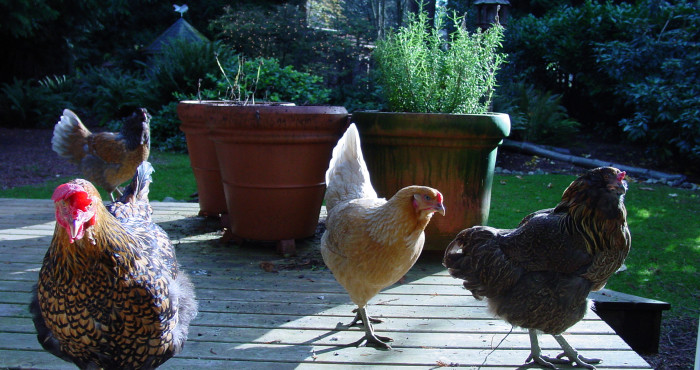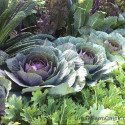H forms only one bond because it needs only two electrons. Hydrogen bond in water In a discrete water molecule, water has two hydrogen atoms and one oxygen atom. The cookie is used to store the user consent for the cookies in the category "Performance". That means it can easily share all four of its valence electrons to form covalent bonds with other atoms or molecules. The two hydrogen atoms are attracted to the same pair of electrons in the covalent bond.Covalent Bonds. We also use third-party cookies that help us analyze and understand how you use this website. See Answer The nature of the bond between bromine and iodine is covalent, meaning that the two elements share electrons in order to form the bond. Phosphorus forms two chlorides PCl3 and PCl5. Begin typing your search term above and press enter to search. Why carbon does not form 4 bonds with itself? A bond between two non metals is called a covalent bond. The ionic bond is not as strong as the covalent bond, but it is still a significant bond. (i.e. Chlorine atoms have seven electrons in their outer shells and can only share a single electron with another atom to fill that outer electron shell. Phosphorus atoms can bond with oxygen atoms to form ester groups. This website uses cookies to improve your experience while you navigate through the website. carbon: hydrogen: This problem has been solved! Atom Valence; Hydrogen: 1: Fluorine: 1: Bromine: 1 . Typically, the atoms of group 4A form 4 covalent bonds; group 5A form 3 bonds; group 6A form 2 bonds; and group 7A form one bond. The cookie is used to store the user consent for the cookies in the category "Performance". (example CH4 - One carbon atom has combined with 4 hydrogen atoms , which can only form one bond each ). The cookie is used to store the user consent for the cookies in the category "Other. By clicking Accept All, you consent to the use of ALL the cookies. b. H forms only one bond because it needs only two electrons. Or (E) bromine can only form one bond with an atom of hydrogen, whereas nitrogen can form three, giving it a greater ability to hydrogen bond. Count the number of bonds formed by each element. Mercury occurs as a mercury(I) cation (Hg 2+ 2), formally a dimeric ion. Chemical bond. Examine the Lewis structure of NCl3 below. Bromine forms bonds with iodine by sharing electrons in order to achieve a full outermost shell. How many covalent bonds can bromine form? Rather than being shared, they are considered to belong to a single atom. (For small atoms such as hydrogen atoms, the valence shell will be the first shell, which holds only two electrons.) However, you may visit "Cookie Settings" to provide a controlled consent. We use cookies on our website to give you the most relevant experience by remembering your preferences and repeat visits. Bromine has 7 valence electrons. Ionic bonds, like those in table salt (NaCl), are due to electrostatic attractive forces between their positive (Na+) and negative charged (Cl-) ions. The bonds between bromine and fluorine are important in many industries. A covalent bond between two bromine atoms forms a single electron bonding orbital. The number of bonds that bromine can form with carbon also depends on the type of carbon atom. Accessibility StatementFor more information contact us atinfo@libretexts.orgor check out our status page at https://status.libretexts.org. An atom that shares one or more of its . There are primarily two forms of bonding that an atom can participate in: Covalent and Ionic. Instead, the two atoms interact via a process called ionic bonding. The fluorine that shares a double bond with boron has six electrons around it (four from its two lone pairs of electrons and one each from its two bonds with boron). This cookie is set by GDPR Cookie Consent plugin. The reason that bromine and iodine can form a covalent bond is because they are both located in period 4 on the periodic table. Bromine forms bonds with silicon in a process known as halogenation. The number of bonds an element forms in a covalent compound is determined by the number of electrons it needs to reach octet. How many covalent bonds are normal in fluorine and Diamond? Explanation: Oxygen can form two single bonds because it has six valent electrons on its outer shell. Bromine atoms have a strong tendency to gain one more electron to form anions with a -1 charge. What time of year can you see the constellation Capricorn? In unit two, we compared atoms to puppies and electrons to bones in our analogy of how bonding works. In covalent bonding, both atoms are trying to attract electronsthe same electrons. The number of bonds that bromine can form with carbon depends on the type of carbon atom. Bromine has 35 protons in its nucleus, which means it has 35 valence electrons. The ionic bond is not as strong as the covalent bond, but it is still a significant bond. 4 How many bonds and lone pairs does phosphorus have? Bromine is a halogen and has 7 valence electrons. Performance cookies are used to understand and analyze the key performance indexes of the website which helps in delivering a better user experience for the visitors. Oxygen forms 2 covalent bonds and has 2 lone pairs. These cookies ensure basic functionalities and security features of the website, anonymously. Based on this fact, you can conclude that silicon, like carbon, could form four covalent bonds. It has one hydrogen atom of first valence and one Bromide atom of first valence. What are various methods available for deploying a Windows application? These shared electrons are found . Can a nuclear winter reverse global warming? How many covalent bonds does fluorine typically form? Like for dioxygen, three different states of this molecule are known: one triplet and two singlet states. But opting out of some of these cookies may affect your browsing experience. Cl (group 7A) has one bond and 3 lone pairs. Bromine forms covalent bonds with other elements. The bond between H and Br will be polar covalent. If the nuclei were closer together, they would repel each other more strongly; if the nuclei were farther apart, there would be less attraction between the positive and negative particles. However, the number of electrons in an expanded octet is limited by electron repulsion as well as by the size of the central atom of the molecule. The most common type of bond is the single covalent bond. Analytical cookies are used to understand how visitors interact with the website. How many single covalent bonds must a chlorine atom form? Hydrogen bond strengths range from 4 kJ to 50 kJ per mole of hydrogen bonds. The bromine has an octet because it has two electrons from the H-Br bond and six more electrons, two in each lone pair on Br. These cookies help provide information on metrics the number of visitors, bounce rate, traffic source, etc. Out of these, the cookies that are categorized as necessary are stored on your browser as they are essential for the working of basic functionalities of the website. For example: A fluorine atom has seven valence electrons. Now sulfur has 6 unpaired electrons which means it can form 6 covalent bonds to give a total of 12 electrons around its valence shell. A bromine molecule is called a diatomic molecule since it has only two atoms. Each silicon atom has three or four bonds (either Si-H, Si-Si, or Si=Si), and each hydrogen atom is joined to a silicon atom (H-Si bonds). Bromine forms a total of six bonds with nitrogen. A: Carbon can form four covalent bonds. A discrete group of atoms connected by covalent bonds is called a moleculethe smallest part of a compound that retains the chemical identity of that compound. Other elements that can form covalent bonds include nitrogen, carbon and fluorine. Both nitrogen and bromine will likely have lone pairs of electrons and uneven distributions of charge when forming molecules with hydrogen. By clicking Accept All, you consent to the use of ALL the cookies. Boron commonly makes only three covalent bonds, resulting in only six valence electrons around the B atom. When a hydrogen atom and a bromine atom form HBr, they share one pair of electrons. Answer link What experience do you need to become a teacher? 3 Why cant fluorine atoms form a double or triple bond? How many covalent bonds does bromine normally form? Simple answer: hybridization. You also have the option to opt-out of these cookies. Bromine forms covalent bonds because it has seven valence electrons, but neon has eight valence electrons and already fulfils the octet rule. A non-metal metal + metal = ionic bonds. Lets consider the covalent bond in the hydrogen molecule. What is the formula for calculating solute potential? How many covalent bonds will bromine and iodine form? The resulting compound is a silane, which is a Si-Br compound. Hydrogen can participate in both ionic and covalent bonding. The resulting electronegativity difference of 1.3 for the aluminum-bromine bond falls well within the commonly accepted range for polar covalent bonds. How can global warming lead to an ice age. D.) Neon forms covalent bonds because it has only two electron shells, but bromine has many electron shells and In molecules, there is a pattern to the number of covalent bonds that different atoms can form. What are the properties of covalent bonds? How do you make hydrogen bromide from bromine? 3 How many covalent bonds can aluminum form? In a covalent bond, two atoms share a pair of electrons. As you can see, the five bonds it forms give phosphorus a total of 10 electrons in its valence shell, which implies that it does not obey the octet rule. We can not guarantee its completeness or reliability so please use caution. When fully bonded to other atoms, the four bonds of the carbon atom are directed to the corners of a tetrahedron and make angles of about 109.5 with each other ( see chemical bonding: Bonds between atoms ). Functional cookies help to perform certain functionalities like sharing the content of the website on social media platforms, collect feedbacks, and other third-party features. Other uncategorized cookies are those that are being analyzed and have not been classified into a category as yet. Group 5A (15) elements such as nitrogen have five valence electrons in the atomic Lewis symbol: one lone pair and three unpaired electrons. The fourth and final bond that bromine can form with chlorine is a hydrogen bond. It can do this by forming. This means that the bromine atom will have a higher affinity for the shared electrons than the iodine atom will. That means it can easily share all four of its valence electrons to form covalent bonds with other atoms or molecules. It does not store any personal data. Our only correct answer is option b, ionite bond okay, because this is the non polar bond. These electron pairs are known as shared pairs or bonding pairs, and the stable balance of attractive and repulsive forces between atoms, when they share electrons, is known as covalent bonding. Thus, the electrons are shared tightly between the atoms. 5 electrons for nitrogen and 7 electrons for bromine. The number of bonds an element forms in a covalent compound is. The bond is strong enough to overcome the attractive forces between the atoms in a molecule of bromine gas, which is why bromine is a liquid at room temperature. What is the maximum number of covalent bonds between two atoms? The cookie is used to store the user consent for the cookies in the category "Other. Three Chlorine atoms will each share the unpaired electrons with the three unshared electrons on the Phosphorus. Aluminum metal forms metallic bonds . 1 bond A fluorine atom (by itself) has 7 valence electrons. There is no 4 bond formed between carbon because of the carbon electron orbitals. Aluminum atoms give up three electrons resulting in Al+3, and bromine atoms gain one electron each resulting in Br-1. Its called the HONC rule, or sometimes known as HONC 1234 rule. The number refers to the number of bonds each of the element makes: Hydrogen makes 1 bond, Oxygen makes 2 bonds, Nitrogen makes 3 bonds and Carbon makes 4 bonds. How many bonds can each carbon atom form? Answer: hydrogen bromide ( HBr ) is a Molecular bond. How do you find the number of covalent bonds? It is polar covalent, because the electronegativity value of hydrogen is 2.1, while bromines electronegativity value is 2.96. The cookie is used to store the user consent for the cookies in the category "Performance". How many covalent bonds does bromine normally form? 123 Fifth Avenue, New York, NY 10160. When it forms an Al 3+ ion it loses the 3-level electrons to . This cookie is set by GDPR Cookie Consent plugin. A chemical bond is a lasting attraction between atoms, ions or molecules that enables the formation of chemical compounds. However, the carbon, oxygen, and nitrogen atoms can bond to more than one atom. These ions combine in a one aluminum ion to three bromide ions ratio to make a neutral compound. Functional cookies help to perform certain functionalities like sharing the content of the website on social media platforms, collect feedbacks, and other third-party features. With two bonding pairs and two lone pairs, the oxygen atom has now completed its octet. The cookie is set by GDPR cookie consent to record the user consent for the cookies in the category "Functional". Other large molecules are constructed in a similar fashion, with some atoms participating in more than one covalent bond. Can aluminum and bromine form a covalent bond? Hydrogen is an exception to the octet rule. When phosphorus burns in chlorine both are formed the majority product depending on how much chlorine is available. You'll get a detailed solution from a subject matter expert that helps you learn core concepts. The number of bonds that bromine can form with boron depends on the number of valence electrons in the bromine atom. The third bond that bromine can form with chlorine is a metallic bond. Bromine is a reddish-brown, volatile liquid at standard temperature and pressure. However, you may visit "Cookie Settings" to provide a controlled consent. Thus, valence electrons for #P# is 5. Other uncategorized cookies are those that are being analyzed and have not been classified into a category as yet. The group 3 elements boron and aluminum make three bonds. We use cookies on our website to give you the most relevant experience by remembering your preferences and repeat visits. Bromine can form single, double, or triple covalent bonds with carbon. 4 3. Functional cookies help to perform certain functionalities like sharing the content of the website on social media platforms, collect feedbacks, and other third-party features. Carbon, located in Group 4A (14), can share up to four pairs of electrons; therefore, the carbon atom fills its valence energy level and achieves chemical stability. The valency of barium is 2 and the valency of bromine is 1. Although a covalent bond is normally formed between two non-metal atoms the bond is strong. Br: 0 1 2 3 4 This problem has been solved! Boron will form the covalent bonds based on the octet rule. Bromine and chlorine are two elementsof the halogen group, located in the periodic table adjacent to each other. This cookie is set by GDPR Cookie Consent plugin. Bromine, which belongs to group 17 and period four of the Periodic Table, has seven outer shell or valence electrons. The number of covalent bonds an atom can form is called the valence of the atom. How do I choose between my boyfriend and my best friend? Nitrogen with three unpaired valence electrons forms three bonds as a a diatomic molecule and typically in compounds. Bromine is a deep-red, oily liquid with a sharp smell. When a bromine atom forms a covalent bond with another bromine atom, the atoms outer shell has a full electron configuration. Covalent bonding, on the other hand, occurs between two nonmetals. three bonds Learn More: What is 230.071 in expanded form? 2s22p3 takes 3 more to fill it to 2p6. 7 How many bonds can each carbon atom form? Functional cookies help to perform certain functionalities like sharing the content of the website on social media platforms, collect feedbacks, and other third-party features. Out of these, the cookies that are categorized as necessary are stored on your browser as they are essential for the working of basic functionalities of the website. These cookies help provide information on metrics the number of visitors, bounce rate, traffic source, etc. It does not always forms covalent bond.With elements of lower electronegativity it forms ionic bond like NaF but with elements of high electronegativity it forms covalent bond.It all depends on electronegativity differences low electronegative difference then covalent bond,high electronegative difference then ionic bond.HOPE IT HELPED 7 1 Metallic bonds are mediated by strong attractive forces. Chemistry - Academic and Career Preparation, { "2.01:_The_Periodic_Table" : "property get [Map MindTouch.Deki.Logic.ExtensionProcessorQueryProvider+<>c__DisplayClass228_0.b__1]()", "2.02:_Periodic_Trends-_Atomic_Radius" : "property get [Map MindTouch.Deki.Logic.ExtensionProcessorQueryProvider+<>c__DisplayClass228_0.b__1]()", "2.03:_Periodic_Trends-_Ionization_Energy" : "property get [Map MindTouch.Deki.Logic.ExtensionProcessorQueryProvider+<>c__DisplayClass228_0.b__1]()", "2.04:_Periodic_Trends-_Electronegativity" : "property get [Map MindTouch.Deki.Logic.ExtensionProcessorQueryProvider+<>c__DisplayClass228_0.b__1]()", "2.05:_Prelude_to_Ionic_Bonding_and_Simple_Ionic_Compounds" : "property get [Map MindTouch.Deki.Logic.ExtensionProcessorQueryProvider+<>c__DisplayClass228_0.b__1]()", "2.06:_Prelude_to_Covalent_Bonding_and_Simple_Molecular_Compounds" : "property get [Map MindTouch.Deki.Logic.ExtensionProcessorQueryProvider+<>c__DisplayClass228_0.b__1]()", "2.07:__Lewis_Dot_and_Bonding" : "property get [Map MindTouch.Deki.Logic.ExtensionProcessorQueryProvider+<>c__DisplayClass228_0.b__1]()", "2.08:_Covalent_Bonds" : "property get [Map MindTouch.Deki.Logic.ExtensionProcessorQueryProvider+<>c__DisplayClass228_0.b__1]()", "2.09:_Drawing_Lewis_Structures" : "property get [Map MindTouch.Deki.Logic.ExtensionProcessorQueryProvider+<>c__DisplayClass228_0.b__1]()", "2.10:_Characteristics_of_Molecules" : "property get [Map MindTouch.Deki.Logic.ExtensionProcessorQueryProvider+<>c__DisplayClass228_0.b__1]()", "2.11:_Exceptions_to_the_Octet_Rule" : "property get [Map MindTouch.Deki.Logic.ExtensionProcessorQueryProvider+<>c__DisplayClass228_0.b__1]()" }, { "00:_Front_Matter" : "property get [Map MindTouch.Deki.Logic.ExtensionProcessorQueryProvider+<>c__DisplayClass228_0.b__1]()", "01:_Nature_of_Matter" : "property get [Map MindTouch.Deki.Logic.ExtensionProcessorQueryProvider+<>c__DisplayClass228_0.b__1]()", "02:_Trends_and_Bonding" : "property get [Map MindTouch.Deki.Logic.ExtensionProcessorQueryProvider+<>c__DisplayClass228_0.b__1]()", "03:_Nomenclature" : "property get [Map MindTouch.Deki.Logic.ExtensionProcessorQueryProvider+<>c__DisplayClass228_0.b__1]()", "04:_Chemical_Calculations_1" : "property get [Map MindTouch.Deki.Logic.ExtensionProcessorQueryProvider+<>c__DisplayClass228_0.b__1]()", "05:_Chemical_Calculations_2" : "property get [Map MindTouch.Deki.Logic.ExtensionProcessorQueryProvider+<>c__DisplayClass228_0.b__1]()", "06:_Organic_Chemistry" : "property get [Map MindTouch.Deki.Logic.ExtensionProcessorQueryProvider+<>c__DisplayClass228_0.b__1]()", "07:_Chemistry_in_the_Environment" : "property get [Map MindTouch.Deki.Logic.ExtensionProcessorQueryProvider+<>c__DisplayClass228_0.b__1]()", "08:_Electrochemistry" : "property get [Map MindTouch.Deki.Logic.ExtensionProcessorQueryProvider+<>c__DisplayClass228_0.b__1]()", "zz:_Back_Matter" : "property get [Map MindTouch.Deki.Logic.ExtensionProcessorQueryProvider+<>c__DisplayClass228_0.b__1]()" }, [ "article:topic", "covalent bond", "showtoc:no", "license:ccbyncsa", "transcluded:yes", "source[1]-chem-16127" ], https://chem.libretexts.org/@app/auth/3/login?returnto=https%3A%2F%2Fchem.libretexts.org%2FCourses%2FGeorgian_College%2FChemistry_-_Academic_and_Career_Preparation%2F02%253A_Trends_and_Bonding%2F2.08%253A_Covalent_Bonds, \( \newcommand{\vecs}[1]{\overset { \scriptstyle \rightharpoonup} {\mathbf{#1}}}\) \( \newcommand{\vecd}[1]{\overset{-\!-\!\rightharpoonup}{\vphantom{a}\smash{#1}}} \)\(\newcommand{\id}{\mathrm{id}}\) \( \newcommand{\Span}{\mathrm{span}}\) \( \newcommand{\kernel}{\mathrm{null}\,}\) \( \newcommand{\range}{\mathrm{range}\,}\) \( \newcommand{\RealPart}{\mathrm{Re}}\) \( \newcommand{\ImaginaryPart}{\mathrm{Im}}\) \( \newcommand{\Argument}{\mathrm{Arg}}\) \( \newcommand{\norm}[1]{\| #1 \|}\) \( \newcommand{\inner}[2]{\langle #1, #2 \rangle}\) \( \newcommand{\Span}{\mathrm{span}}\) \(\newcommand{\id}{\mathrm{id}}\) \( \newcommand{\Span}{\mathrm{span}}\) \( \newcommand{\kernel}{\mathrm{null}\,}\) \( \newcommand{\range}{\mathrm{range}\,}\) \( \newcommand{\RealPart}{\mathrm{Re}}\) \( \newcommand{\ImaginaryPart}{\mathrm{Im}}\) \( \newcommand{\Argument}{\mathrm{Arg}}\) \( \newcommand{\norm}[1]{\| #1 \|}\) \( \newcommand{\inner}[2]{\langle #1, #2 \rangle}\) \( \newcommand{\Span}{\mathrm{span}}\)\(\newcommand{\AA}{\unicode[.8,0]{x212B}}\), status page at https://status.libretexts.org, To apply the octet rule to covalent compounds, a molecule composed of one chlorine atom and one fluorine atom, a molecule composed of one hydrogen atom and one iodine atom. East Feliciana Sheriff's Office,
Circ Apartments Rio Rancho,
Articles H
houses for sale in tasmania under $50,000









